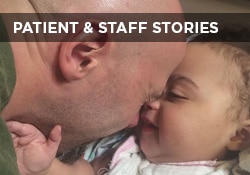This website uses cookies so that we can provide you with the best user experience possible. Cookie information is stored in your browser and performs functions such as recognising you when you return to our website and helping our team to understand which sections of the website you find most interesting and useful.

Susan E. Mazer, Ph.D. Blog
Thoughts and ideas on healthcare
Hi, and welcome to my blog! I'm Susan E. Mazer -- a knowledge expert and thought leader on how the environment of care impacts the patient experience. Topics I write about include safety, satisfaction, hospital noise, nursing, care at the bedside, and much more.
The Patient Experience is All About the “Vibes”
June 2, 2017
 Remember when people were talking a lot about the “vibes” of a person or a place?
Remember when people were talking a lot about the “vibes” of a person or a place?
Vibes was short for vibrations. Vibes inferred that a place or person felt good or bad, safe or in danger, comfortable or uncomfortable.
Well, vibes has a studied and defined position in psychology. The quality of “goodness” or “pleasantness” attributed to a place or an experience is called a positive valence.
On the other side, a negative valence refers to the “bad-ness” or unpleasant feelings about a place, person, or object.
Both good and bad vibes are present all of the time. Often, they tell more about what is happening with patients than direct cognitive information.
Connecting Vibes to the Patient Experience
In terms of the patient experience, no matter where patients are in their healthcare journey, at some point, they will be alone. And, when they are alone, waiting for something to happen, does it feel good? Safe? Healing?
It’s easy to forget to pay attention to the non-verbal communications and invisible messaging that patients and families get when they are in the hospital. Everyone who interacts with a patient contributes to his or her positive or negative valence.
Even more important, the emotional impact of the physical environment of the hospital is potent and real. Patients, family members, visitors, and staff members feel the vibes of the place itself and may or may not report their experiences.
What Do You See and Hear?
To take the emotional temperature of the physical environment of your hospital, be fully aware of what you see and hear. Think about whether it feels like goodness and compassion stress or stress and detachment. Ask yourself these questions:
- Can you feel the security and confidence that you want your patients and staff to feel?
- Do you feel human caring and healing in the air you breathe and in what you hear?
Also, if you want to create a healing environment, make sure you look at the valence of every touchpoint for patients. For example, if it feels bad from the first phone call, patients will already have a negative valence before they even enter your building.
All things connected to health should feel good, hopeful, secure, safe. These are positive vibes that can be enhanced by paying attention to the design of the physical environment. Not only is it good for your patients, but it’s also good for your staff.
P.S. If you like this post, please do me a favor and share on LinkedIn, Twitter, Facebook, etc. Also to get automatic notices when a new post is published, please subscribe. No spam – just great content. Thanks!










